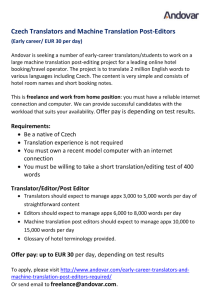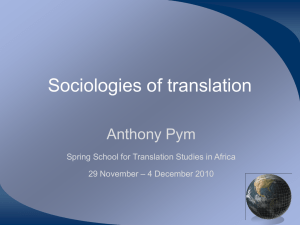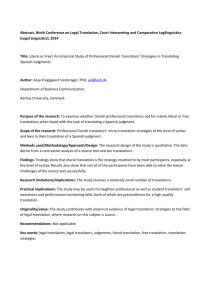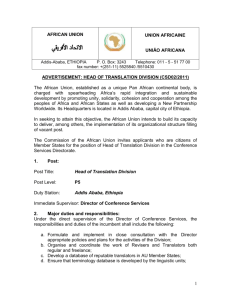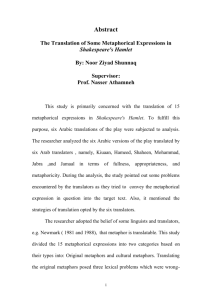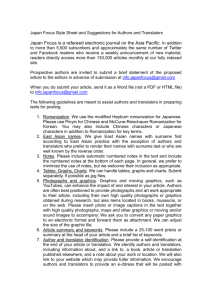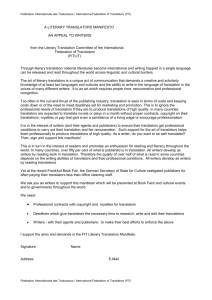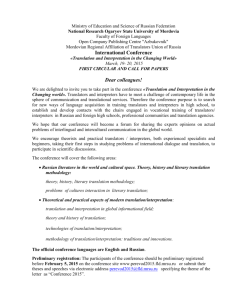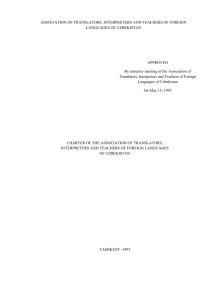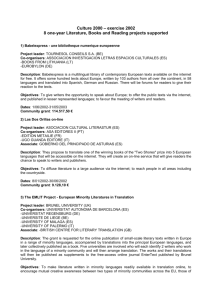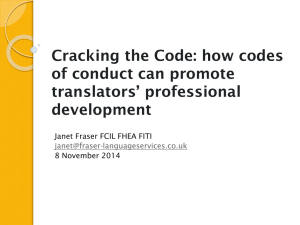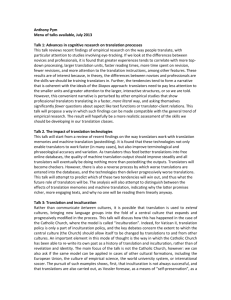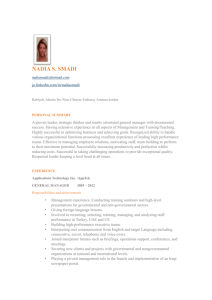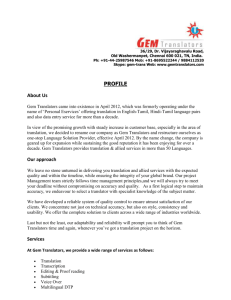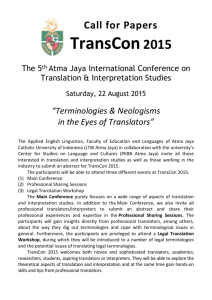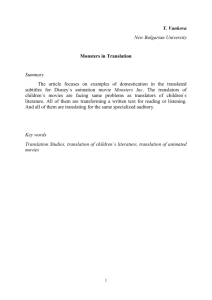Translators` intercultural competence and translatorial action
advertisement
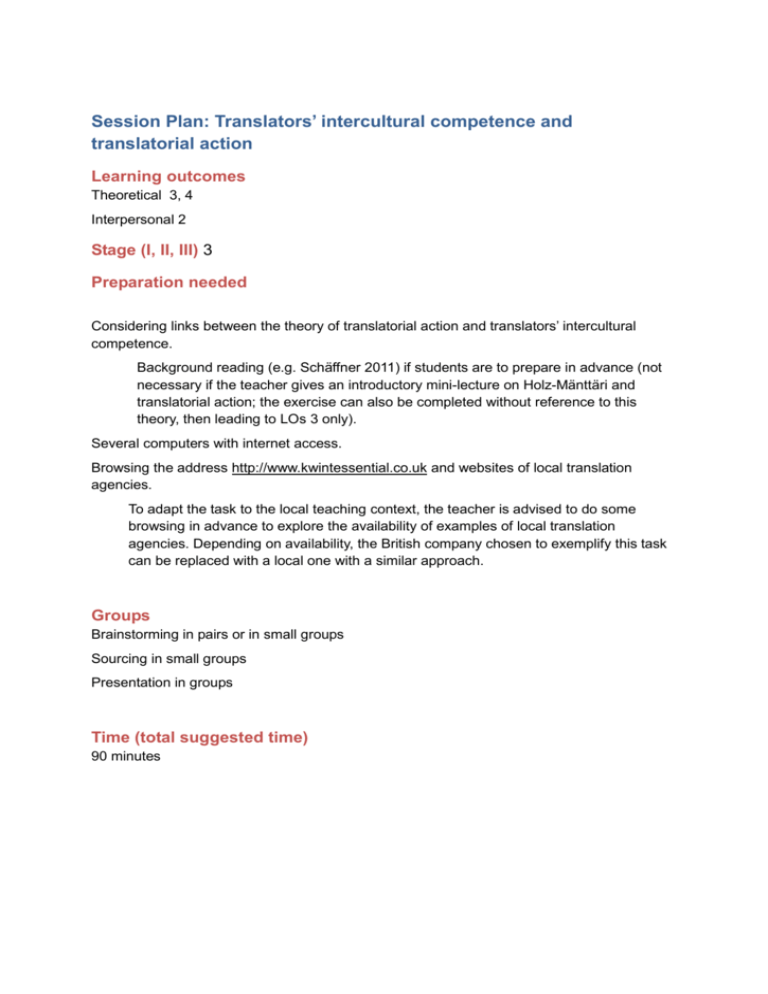
Session Plan: Translators’ intercultural competence and translatorial action Learning outcomes Theoretical 3, 4 Interpersonal 2 Stage (I, II, III) 3 Preparation needed Considering links between the theory of translatorial action and translators’ intercultural competence. Background reading (e.g. Schäffner 2011) if students are to prepare in advance (not necessary if the teacher gives an introductory mini-lecture on Holz-Mänttäri and translatorial action; the exercise can also be completed without reference to this theory, then leading to LOs 3 only). Several computers with internet access. Browsing the address http://www.kwintessential.co.uk and websites of local translation agencies. To adapt the task to the local teaching context, the teacher is advised to do some browsing in advance to explore the availability of examples of local translation agencies. Depending on availability, the British company chosen to exemplify this task can be replaced with a local one with a similar approach. Groups Brainstorming in pairs or in small groups Sourcing in small groups Presentation in groups Time (total suggested time) 90 minutes Background for lecturer In her now classic treatise, Translatorisches Handeln: Theorie und Methode, Justa HolzMänttäri (1984) defined the role and tasks of professional translators. According to her, they engage in “translatorial action” (a.k.a translational action). Combining communication theory and action theory as well as her own experiences as a translator, Holz-Mänttäri defines this translatorial action as intercultural communication including but not limited to the textual processes we usually call translation. Other forms of translatorial action could include, for example, drafting an entirely new text because of a faulty source text or advising the commissioner to NOT to produce a particular translation at all. Consultancy work in intercultural communication opens up many new and profitable avenues for professional translators to expand their business models. Holz-Mänttäri was not able to develop her model further. The aim of this teaching material is to update this theoretical approach by exploring and innovating on what kinds of translatorial actions the 21st century translators could engage in. Simultaneously, the session supports the students’ professionalization process. Core reference: Holz-Mänttäri, Justa (1984) Translatorisches Handeln: Theorie und Methode. Helsinki: Suomalainen tiedeakatemia. Summary in English: Christina Schäffner (2011). Theory of translatorial action. In: Gambier, Yves and Luc van Doorslaer (eds.), Handbook of Translation Studies: Volume 2 (pp. 157– 162). Activities a.i. Teacher's presentation of theory, teacher led, time: 10 minutes, theoretical 4 Short lecture or presentation of the essential points of theory a.ii. Brainstorming in pairs or small groups, time: 15 minutes, theoretical 4 In groups, try and come up with as many business ideas in intercultural communication for translators as you can. a.iii. Sourcing in small groups, time: 20-30 minutes, theoretical 3 Browsing the web pages of the British translation agency Kwintessential (http://www.kwintessential.co.uk) to see what kinds of services they offer and searching for similar services in the home country. Are there many service providers? Do they also offer translation and/or interpreting? Did ideas emerge in activity 1 that do not seem to be widely on offer yet? a.iv. Presentations in groups, time: 5 minutes/presentation plus preparation 30 minutes Each group selects one translatorial service that they think has innovative potential (preferably one they themselves brainstormed, but it may also be one they found while sourcing) and prepares a 5 minute presentation of it to the class, explaining what the service is and what kind of niche it fills in the markets. Adaptations for an integrated approach In the context of a business skills course for translators the presentation may take the form of a pitch talk (or even a very short „elevator pitch”). Requires briefing on pitching (for more on pitching see e.g. http://www.mindtools.com/pages/article/elevator-pitch.htm).
